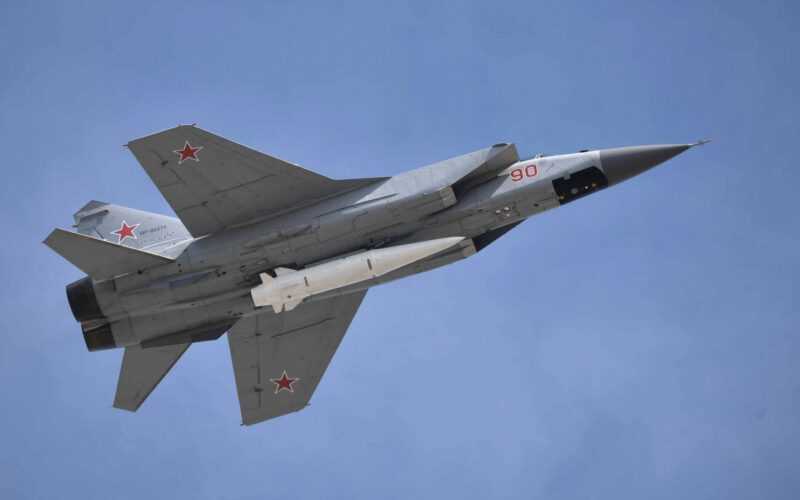For several years now, “hypersonic” is the buzzword that refuses to go away. And for a good reason: embodying both the latest scientific advances and the reheating of international tensions, it promises to be no less disruptive than ballistic missiles or strategic bombers were back in the day.
The center of the hypersonic race is a three-sided confrontation between the United States, China, and Russia. All three participants have their own expectations and their own approaches to the problem: the US has lost its lead, but is catching up fast; China maintains secrecy but does not miss an occasion to boast.
Russia has been the most vocal of them though, practically kickstarting the hypersonic discussion in the public. On March 1, 2018, in a state-of-the-nation-style address, President Vladimir Putin swaggered about an array of invincible wonder-weapons that will force “the West” to take Russia seriously.
The list (complete with low-resolution 3d graphics galore) consisted of a nuclear-armed cruise missile, similarly powered torpedo, a point-defense laser, a new heavy ICBM, as well as a hypersonic glide vehicle, and an aircraft-launched ballistic missile. With half of those weapons able to reach five times the speed of sound, the race was set.
ICBMs are hypersonic by definition, their warheads reaching incredible speeds upon the re-entry into the atmosphere. But despite the speed, their trajectories are predictable, providing a chance of interception. Hypersonic glide vehicles are designed to circumvent that problem: they reach their top speed with the help of an ICBM booster, but then detach from it, and glide down to the target while maneuvering.
Both Sarmat ICBM and Avangard glide vehicles are impressive and game-changing in their own right. But the third weapon, the Kh-47M2 Kinzhal missile, is even more unique.
Hypersonic ground attack
It belongs to an extremely rare kind of hypersonic weapons that were actually adopted, and are wielded in sizable amounts. It is small enough to be carried by a fighter jet: an impressive achievement considering that most hypersonic weapons manufactured elsewhere are of the size of fighter jets themselves.
There has been a lot of speculation on the nature of the Kinzhal, its connection to other projects, and its overall effectiveness. So far, the fact that it is an upgrade and an adaptation of Iskander short-range ICBM has been established. The missile can be carried by Tu-22M bomber or MiG-31 heavy interceptor, each having a dedicated variant with a range of 2,000 or 3,000 kilometers.
While it is the only one that made Putin’s list of Russia’s six doomsday weapons, Kinzhal is not the only air-launched hypersonic missile Russia possesses. In the early stages of Kh-47M2’s publicity campaign, it was speculated that this was just an upgraded version of 3M22 Zircon – an anti-ship missile Russia advertised since the mid-90s.
Zircon is primarily a ground-based and ship-based platform, but its first launch was conducted by a Tu-22M bomber in 2012. According to the Russian military command, it was already adopted and in service by 2017, coming a bit too early to make Putin’s list. But by 2020 the military admitted that it was just in the testing phase.
As of early 2021, Zircon’s mass production is said to start in 2022, and it is intended to equip much of Russia’s destroyer fleet. Tu-22M will not receive it though, with Kinzhal becoming its primary anti-ship hypersonic weapon.
Arming the 5th generation
There is also the R-37, arguably the first hypersonic anti-aircraft missile. Designed in the 80s and intended to equip heavy interceptors that would eventually replace MiG-31, it reached the mature stage only recently, being modernized, upgraded, and intended to be compatible with the Sukhoi Su-57, Russia’s newest 5th generation interceptor.
So far it has only been tested with the MiG-31 and the Su-35 though, and although officially adopted, its actual proliferation is yet unclear. It has definitely not flown with the Su-57 though, although recently that plane has made the rounds with another weapon.
According to Rostec, it successfully carried a dummy of yet another, an undisclosed air-to-ground hypersonic missile that was designed for its internal missile bay in January 2021. Its name, appearance, or characteristics were not revealed.
The real situation?
The length and the diversity of the list of hypersonic weapons Russia claims to be wielding look intimidating. Almost every month there is a new development, from yet another test to yet another adoption into service, making sure that terms “Russia” and “hypersonic” are constantly in the public eye together.
Of all those, only R-37 and Kinzhal have actually been adopted though. Both of them have their own peculiarities.
R-37’s official status is rather unclear – reports in Russian media fluctuate between claiming that it is almost ready to be mass-produced to already being widely carried by MiG-31s. Its capabilities are unclear too: as Russian media claims, it has a maximum speed of Mach 6 and is still able to maintain it in the final stages of its flight. Air-to-air missiles typically don’t do that, burning their engines for a short amount of time after the launch, and coasting to the target the rest of the way, constantly losing energy and speed.
As for Kinzhal, so far one regiment of MiG-31s is equipped with them, although in December 2020 Russia announced plans to equip another one. That would make 20 planes armed with the missile, although as recent reports indicate, the first regiment rarely does more than posing for photo ops: no training with the new weapon is conducted, and the country has no strategy of using it.
So, the two hypersonic weapons Russia has, are at the very early stage of adoption, and their usage is far from normalized.

